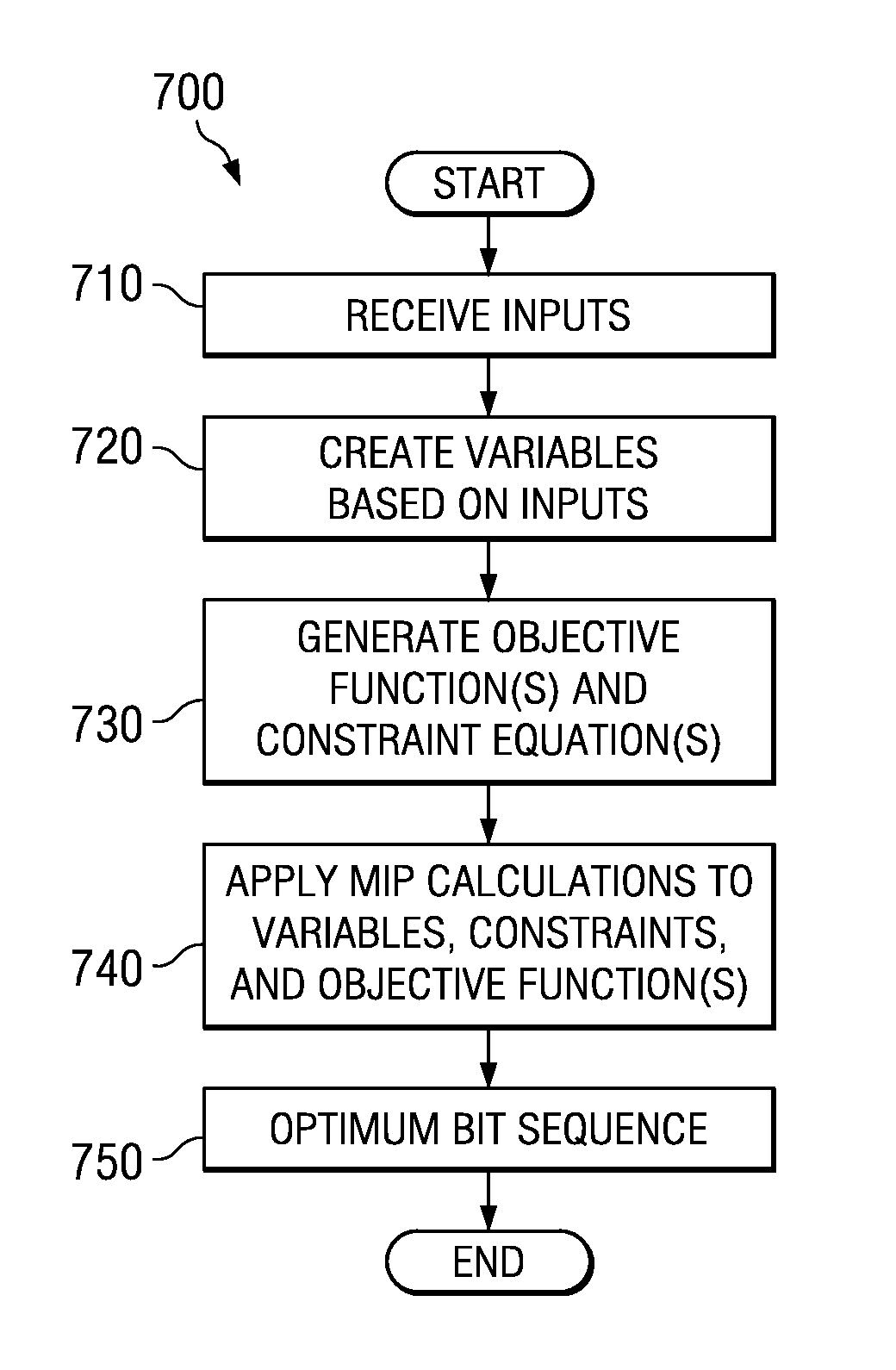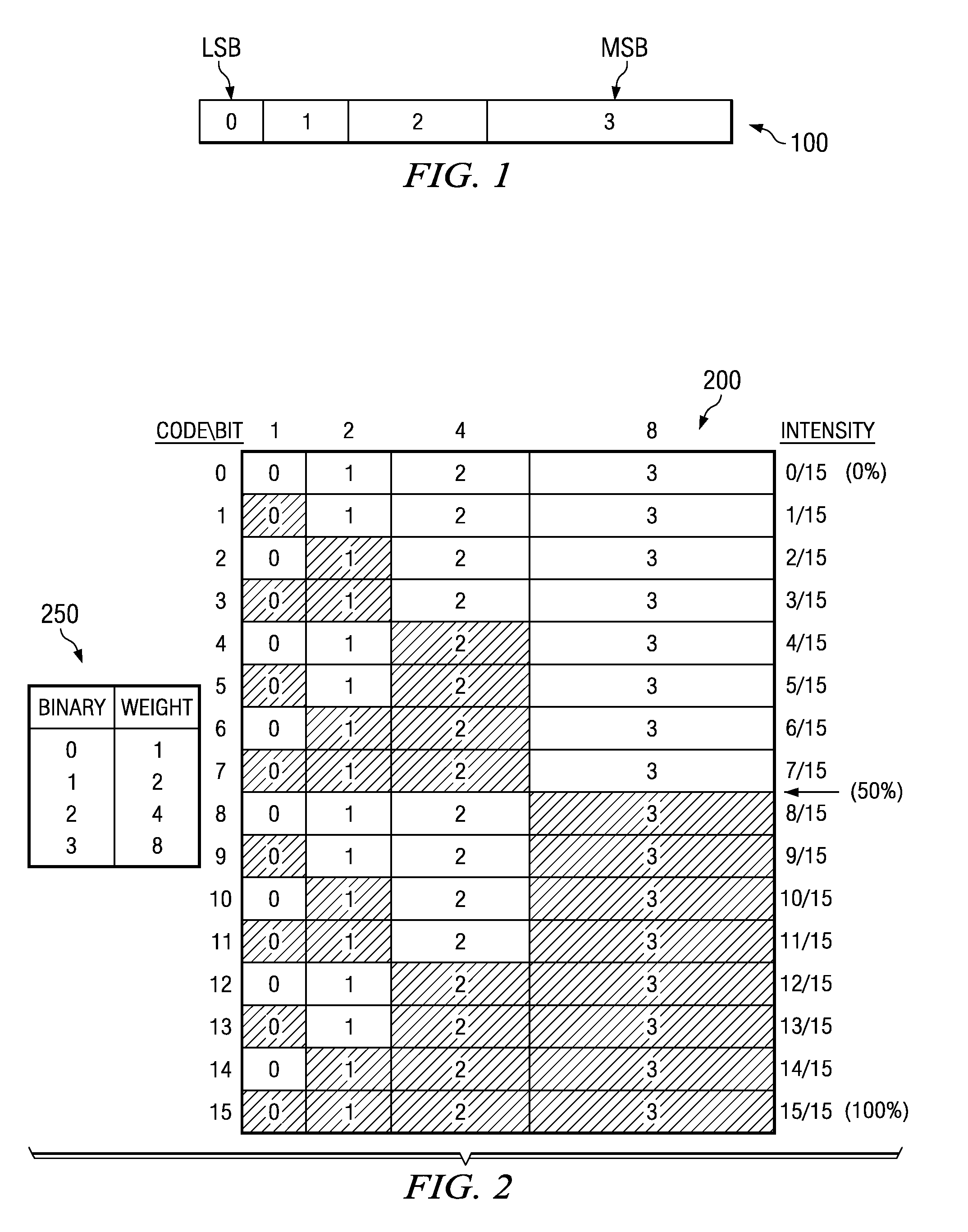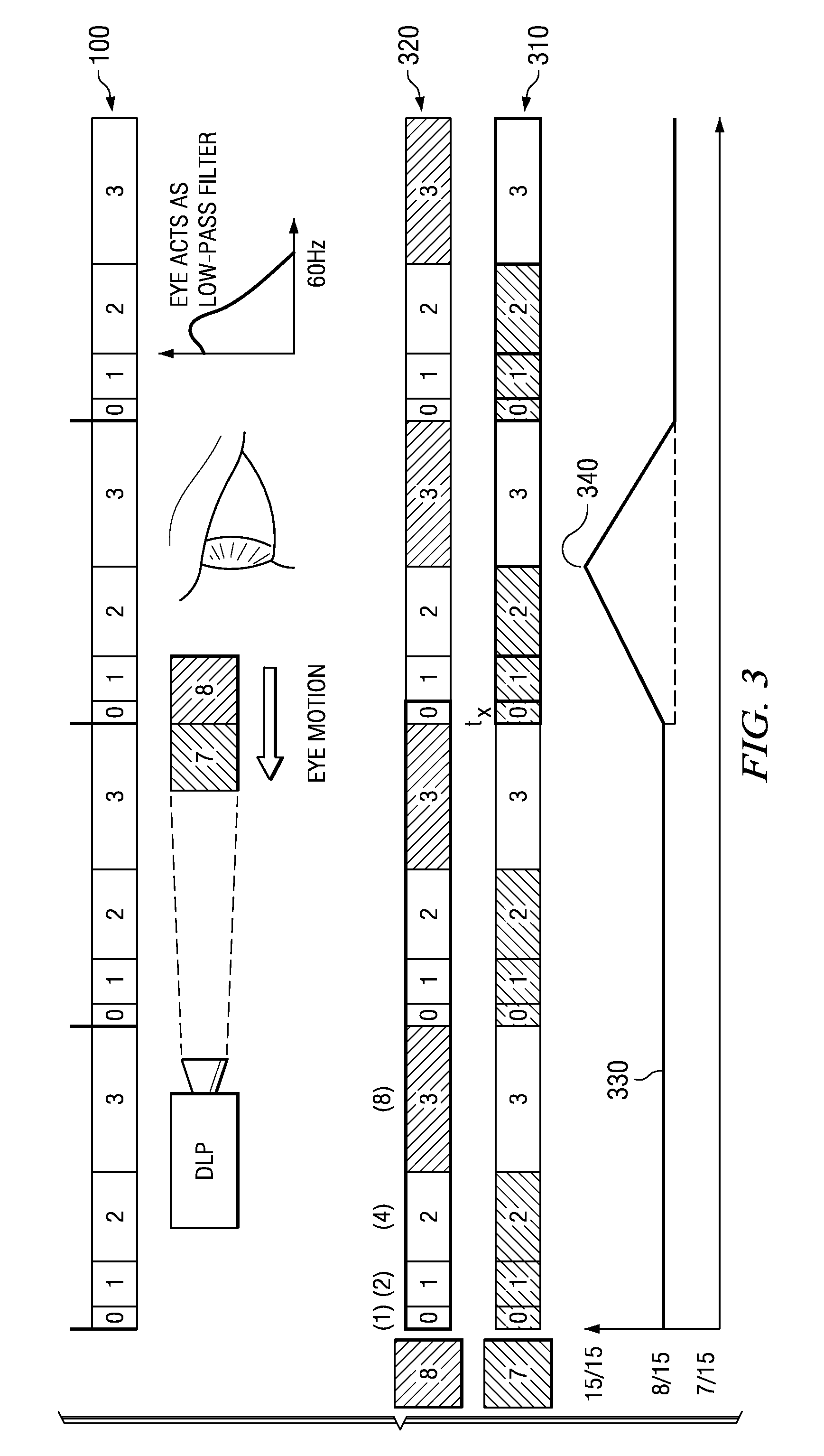Automated bit sequencing for digital light modulation
a digital light modulation and automatic generation technology, applied in the field of spatial light modulation display systems, to achieve the effect of shortening the production period, generating relatively quickly, and reducing the time of production
- Summary
- Abstract
- Description
- Claims
- Application Information
AI Technical Summary
Benefits of technology
Problems solved by technology
Method used
Image
Examples
Embodiment Construction
[0030]The disclosed embodiments allow for formalization of a bit sequence selection problem in such a way as to provide for automated determination of viable PWM bit sequence solutions. Generally speaking, the bit sequence selection process could be categorized as an NP-hard problem, meaning that there is no currently known way of finding a provably optimal solution without checking every possible solution. Such a slow, iterative process is often not practical, taking too long to effectively generate a solution. Instead, it may be possible to employ MIP techniques to more quickly achieve an acceptable, if not provably optimal, solution in a relatively short amount of time. The MIP solution generally would provide an adequate approximation of the optimal solution, thus providing a useful solution in a timely manner.
[0031]Disclosed embodiments formalize and characterize the bit sequence selection problem as a non-linear constraint (mixed integer) programming problem. Generally, the in...
PUM
 Login to View More
Login to View More Abstract
Description
Claims
Application Information
 Login to View More
Login to View More - R&D
- Intellectual Property
- Life Sciences
- Materials
- Tech Scout
- Unparalleled Data Quality
- Higher Quality Content
- 60% Fewer Hallucinations
Browse by: Latest US Patents, China's latest patents, Technical Efficacy Thesaurus, Application Domain, Technology Topic, Popular Technical Reports.
© 2025 PatSnap. All rights reserved.Legal|Privacy policy|Modern Slavery Act Transparency Statement|Sitemap|About US| Contact US: help@patsnap.com



